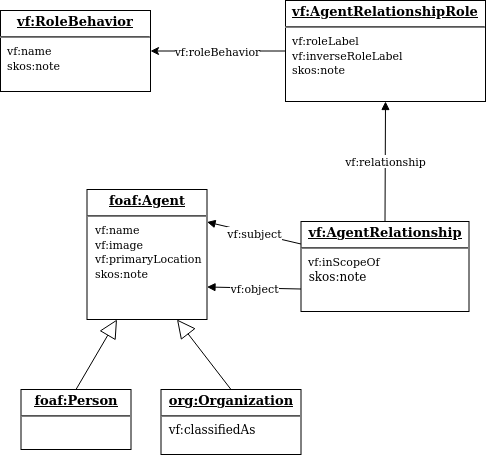ValueFlows vs. AS/AP compatibility will probably mostly be defined in terms of model equivalency
Yes. Hopefully not too OT, but wouldn’t it be wonderful if we could create a separate spec for people, organizations, groups, their relationships, user accounts, etc.? That everyone could use? Seems like a lot of people are working on this piece of their particular puzzle, you mention some, also seeing it in Holochain and Hylo for example. And it seems like if people could create person-centric apps where the person could have an identity outside and across user accounts and different distributed technologies (fediverse, solid, holochain, etc.), it could solve a lot of problems relating the real world to applications. And groups could have a globally unique identity too. I speak only theoretically, but would love to try it. Another day though I guess.
[edit: I posted this without seeing the last 2 comments, so I am behind the discussion around bots.]
Since you are not dealing with the Organization directly but only with its Service, you might consider the service to be the economic agent
I think of it as who is responsible in the real world. But I could be wrong, my head doesn’t wrap well around tech with agency…
You might have a situation where an Organization offers many such services with different payment plans.
In that statement, the Organization is the agent, the services are economic resources, with a little-r. And there would be some agent behind the SaaS itself I would think, even if it is a consortium of some kind. And agents fulfilling could be different agents. But again, very willing to be wrong as use cases develop.
Moving on to thinking about relationship models, this is what VF has now, just as food for thought. It borrowed some of the naming from AS, but needed a few more pieces. And could be changed to be more AP friendly by figuring out the whole agent/actor mapping piece. (Sorry about the UML / relational representation, hope that communicates OK.)
I think User Account (or similar) would be connected to Person, one person can have many user accounts, whether across instances, across technologies, or over time.
The Role Behavior gives some “hard-coded” types of roles, thus freeing up the AgentRelationshipRole to be completely user defined otherwise. It would be something like “member”, “sub-organization”, “trading partner”, maybe a few others, the list is not well defined yet.
In AP, maybe the agent relationship roles in use by a group or organization could define new collections, similar to the followers collection in the spec? Or maybe just standard defined collections for the behavior roles, which can be agreed on? I’m speaking without any experience on an AP implementation, so may be totally off base.
